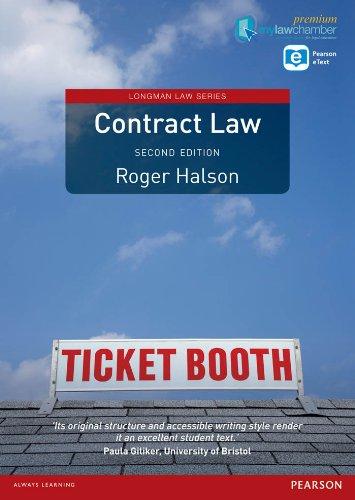7. What is the legal distinction between duress and undue influence as vitiating factors?
8. Communicating of an offer must be made to a particular individual, groups etc. What happens
a. if the communication is made to an individual that the offeror does not in tend to contract with?
b. Where the contract is made to a specified person but is accepted by another person?
c. Where an offer is communicated to a class or group of persons.
d. Where an offer is communicated to the general public or the whole world.
9. What is
a) supervisory jurisdiction
b) Exclusive jurisdiction
c) Appellate jurisdiction
d) Original jurisdiction?
10. What are the brief facts and legal principles espoused in the following cases:
a. RAFFLES v. WICHELHAUS
b. BALFOUR v. BALFOUR
c. TAMPLIN V JAMES
d. DE FRANCESCO V BARNUM
e. SCRIVEN BROS. V HINDLY & CO.
f. LEAF V. INTERNATIONAL GALLERIES
g. CLARKE V. DICKSON
h. CURTIS V. CHEMICAL CLEANING AND DYEING CO.
i. ALLCARD V. SKINNER
j. FISH & MEAT CO. LTD V. ICHNUSA LTD.
Question 15 (1 point) v' Saved A promoter that enters into pre-incorporation contracts is personally liable unless the corporation assumes liability via contract after incorporation Question 16 (1 point) ~/ Saved Sue is negotiating a contract to become CEO of June, Inc. Sue wants to know if there is any protection she should negotiate to protect her personal assets. Which of the below will NOT protect Sue with reference to personal liability as a CEO? 0 Exculpatory clause 6) Business Judgment Rule O D & 0 Insurance O Piercing the Corporate Veil Question 17 (1 point) v' Saved Shareholder must approve any fundamental changes affecting the corporation. 1. Extending the Economic Model 245 is relatively hard. You already encountered this argument in favor of strict liability when we discussed consumer product injuries. We have given an information-cost argument for favoring a rule of strict vicarious liability for employers rather than a rule of negligent vicarious liability. Another argu- ment goes in the opposite direction. To illustrate, a sailor on a tanker might negligently discharge oil onto a public beach at night. Informing the authorities quickly about the accident will reduce the resulting harm and the cost of the cleanup. The captain of the ship might be the only person besides the sailor who knows that the harm occurred or who can prove that pollution came from its ship. Strict vicarious liability gives the cap- tain an incentive to remain silent in the hope of escaping detection. In contrast, a rule of negligent vicarious liability gives the captain an incentive to reveal the harm to the authorities immediately. As long as the captain can prove that he carefully monitored the sailor, the rule of negligent vicarious liability allows the captain to escape liability. As compared to a rule of strict vicarious liability, a rule of negligent vicarious liability encourages employers to report more wrongdoing by employees.?! QUESTION 7.5: What if an accident has occurred because an employee was performing a job for which he was not qualified after the employee had falsely told the employer that he was qualified? Should the employer still be liable for the victim's losses under respondeat superior?Vicarious liability is an important ares of business liability. Choose the best statement of the principle of vicarious liebility. Vicarious liability applies to a number of different fact scenarios, including the liability of employers for tortious actions of employees that were committed in the normal course of employment or pursuant to the employees assigned duties or tasks, even where the employer is not at fault. Vicarious liability applies only to businesses. No jurisdiction in Canada imposes vicarious liability on the owners of motor vehicles. A person, such as an employer, is liable for all the torts committed by employees during working hours A business may substitute another person to perform a service or perform an obligation.Chapter 9 Short Answer Questions (end of chapter p 284): 1 and 2 1. What is the difference between a valid. void and voidable contract? Give one example each of a valid, void and voidable contract. 2. How may a contract be set aside for unconscionable conduct? Discussion Questions (end of chapter p 284): 1 1. Contract law requires that parties enter agreements 'freely and voluntarily'. Explain why the consent to a contract should be 'free and voluntary' and discuss factors that affect the 'free and voluntary consent










